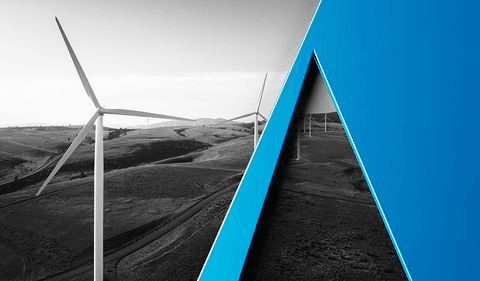Yesterday (1 Feb 2023) marked the launch by the European Commission (EC) of the Green Deal Industrial Plan for the Net Zero Age. Its introduction is aimed at a levelling up of the international playing field and combatting what the EC believes are market distortions arising from aggressive subsidy regimes being introduced ‘elsewhere’. The key concern for the EC is clearly a flight of capital and resource to the United States (US) following the introduction of the formidable Inflation Reduction Act, and this is its answer.

Green Deal Industrial Plan for the Net Zero Age Launched by the European Commission
February 2, 2023

On a first pass, the areas of focus look correct and encouraging for developers and investors alike, (i) developing a predictable, coherent and simplified regulatory framework, (ii) speeding up access to funding and subsidy support, (iii) enriching the skills base and (iv) building supply chain resilience.
There are several areas that we will be looking at very carefully as the policies become more developed:
- A proposed Critical Raw Materials Act which will introduce measures designed to secure supply, from an extraction, refining and recycling perspective, of the raw materials that form the building blocks of the energy transition. We have written previously about our concerns with regard to the lack of lithium refining capacity outside of China and a need for radical and immediate action at global scale. (akingump-lithium-pdf-v1.pdf). It remains to be seen if the detail when released, can offer the level of impetus and drive required.
- A relaxation of State Aid Rules in the context of the energy transition, with a particular focus on facilitating enhanced investment support schemes for the production of strategic net zero technologies, to match the support being received for similar projects outside of the European Union (EU). Developing this under the guise of the Temporary Crisis Framework (rebadged the Temporary Crisis and Transition Framework) is telling and perhaps offers a clear indication of how the EC views the need for urgent steps to level up the playing field!
- The launch in autumn 2023 of the first auction to support the production of renewable hydrogen. The subsidy available will offer a fixed premium for each kilogramme (KG) of renewable hydrogen produced over a period of 10 years. This is designed to mirror the impact of the production tax credit in the Inflation Reduction Act. The initial auction is relatively small (Euro800m), but further auctions or other forms of support that contribute to the RePowerEU hydrogen targets will follow. It is assumed that this will be limited to domestic production and no detail is provided as to the support being offered for production of hydrogen derivatives (e.g. green ammonia).
The Inflation Reduction Act has the potential to flood the US with capital and opportunity. There is a feeling that the US is playing catch up, but for how long?
The EC has set its stall out with an ambitious and far-reaching package. The range of subsidy and capital support packages available and being introduced have the clear potential to crowd-in investment. In the course of the next few months the detail will start to emerge and only then will we see if the package has the necessary firepower to lock-in and grow energy transition investment in the EU in the foreseeable future.
On a first pass, the areas of focus look correct and encouraging for developers and investors alike, (i) developing a predictable, coherent and simplified regulatory framework, (ii) speeding up access to funding and subsidy support, (iii) enriching the skills base and (iv) building supply chain resilience.
There are several areas that we will be looking at very carefully as the policies become more developed:
- A proposed Critical Raw Materials Act which will introduce measures designed to secure supply, from an extraction, refining and recycling perspective, of the raw materials that form the building blocks of the energy transition. We have written previously about our concerns with regard to the lack of lithium refining capacity outside of China and a need for radical and immediate action at global scale. (akingump-lithium-pdf-v1.pdf). It remains to be seen if the detail when released, can offer the level of impetus and drive required.
- A relaxation of State Aid Rules in the context of the energy transition, with a particular focus on facilitating enhanced investment support schemes for the production of strategic net zero technologies, to match the support being received for similar projects outside of the European Union (EU). Developing this under the guise of the Temporary Crisis Framework (rebadged the Temporary Crisis and Transition Framework) is telling and perhaps offers a clear indication of how the EC views the need for urgent steps to level up the playing field!
- The launch in autumn 2023 of the first auction to support the production of renewable hydrogen. The subsidy available will offer a fixed premium for each kilogramme (KG) of renewable hydrogen produced over a period of 10 years. This is designed to mirror the impact of the production tax credit in the Inflation Reduction Act. The initial auction is relatively small (Euro800m), but further auctions or other forms of support that contribute to the RePowerEU hydrogen targets will follow. It is assumed that this will be limited to domestic production and no detail is provided as to the support being offered for production of hydrogen derivatives (e.g. green ammonia).
The Inflation Reduction Act has the potential to flood the US with capital and opportunity. There is a feeling that the US is playing catch up, but for how long?
The EC has set its stall out with an ambitious and far-reaching package. The range of subsidy and capital support packages available and being introduced have the clear potential to crowd-in investment. In the course of the next few months the detail will start to emerge and only then will we see if the package has the necessary firepower to lock-in and grow energy transition investment in the EU in the foreseeable future.
Categories
Previous Entries
Speaking Sustainability
December 12, 2025
On November 18, the United States Court of Appeals for the Ninth Circuit granted a partial injunction blocking enforcement of California’s climate-related financial risk disclosure law (SB 261). Inaugural reports under SB 261 were intended to be published by reporting entities by January 1, 2026. Akin wrote on the subject in full detail here.
Speaking Sustainability
December 11, 2025
Akin is proud to be a Platinum Sponsor of Infocast’s Projects & Money Summit taking place January 12–14, 2026 in New Orleans.
Speaking Sustainability
December 10, 2025
On December 9, 2025, the California Air Resources Board (CARB) announced that it will convene a public hearing on February 26, 2026, to consider approving the adoption of regulations governing California’s climate-related disclosure statutes: SB 253 and SB 261.[1] CARB also published the proposed regulatory text, which we explore below.
Speaking Sustainability
December 4, 2025
On December 1, 2025, the California Air Resources Board (CARB) released an Enforcement Advisory clarifying that it will not enforce SB 261 against covered entities for failing to publish climate-related financial risk reports by the January 1, 2026, statutory deadline.1


